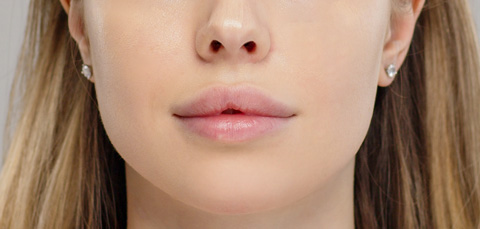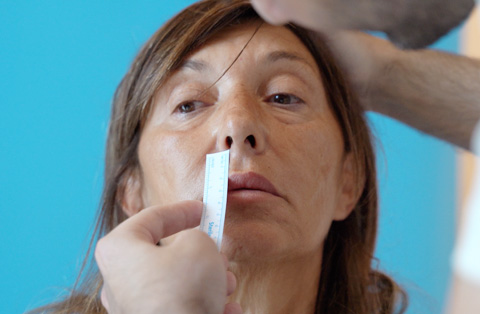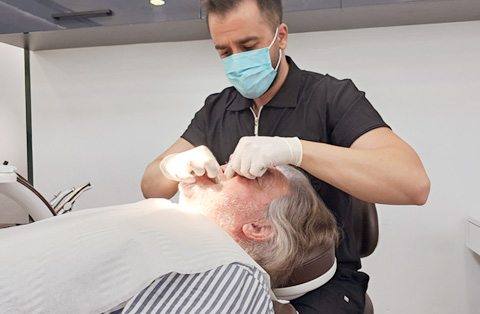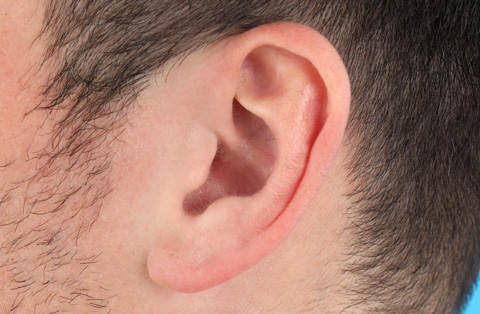Lip augmentation is a cosmetic procedure that enhances the size, shape, or structure of the lips. It can be performed using dermal fillers, fat transfer, or a permanent implant.
Fuller lips have become one of the most requested features in plastic surgery, especially among patients seeking long-lasting or reversible enhancement. In fact, dermal filler procedures for lips increased by over 50 % in the last decade, while demand for implant-based options continues to grow for their permanence.
This guide explains everything you need to know—what types of lip augmentation exist, how lip implants differ from fillers, how much they cost, what recovery looks like, and how safe these procedures are.
What Is Lip Implant Surgery?
Lip implant surgery is a cosmetic surgery that places synthetic implants into the lips to create a fuller, more defined appearance. Unlike temporary lip fillers, implants provide long-lasting volume.
How Is Lip Implant Surgery Performed?
The procedure typically follows these steps:
- Anesthesia: Surgeons use local anesthesia, often with sedation.
- Incision: Small incisions are made at the corners of the mouth.
- Implant insertion: A tunnel is created within the lip tissue, and a soft, flexible implant (usually silicone or expanded polytetrafluoroethylene, ePTFE) is inserted.
- Closure: The incisions are closed with dissolvable sutures.
The entire surgery takes about 30–60 minutes.
What Are the Types of Lip Implants?
- Silicone implants: Pre-formed, smooth, and permanent but removable.
- Permalip implants: A brand of solid silicone implants designed to feel natural and resist migration.
- ePTFE (Gore-Tex): Porous material that allows tissue integration, making the implant more stable.
What Is a Permalip Lip Implant Made Of?
A Permalip lip implant is made of soft, solid silicone elastomer. This material is flexible, biocompatible, and designed specifically for long-term implantation in the lips.
Key Properties of Permalip Implants
- Solid silicone: Unlike injectable silicone (which is unsafe), Permalip uses a pre-formed solid shape that doesn’t leak or rupture.
- Smooth surface: Reduces friction and tissue irritation.
- Tapered ends: Designed to match the natural contour of the lips.
- Three size options: Available in different lengths and diameters to suit various lip shapes and goals.
Why Is Silicone Used in Lip Implants?
According to a study published in International Open Access Journal of the American Society of Plastic Surgeons, solid silicone implants like Permalip are well-tolerated, reversible, and maintain their shape over time. The material does not integrate with tissue, which makes it easier to remove or replace if needed.
Is Permalip FDA-Approved?
There is no FDA approval for Permalip lip implants in the United States. In fact, the FDA issued a warning letter to SurgiSil in April 2019 stating that the Perma Lip implant is not FDA-cleared or approved for use in lip augmentation. While some private clinic sites describe Permalip as “FDA-approved,” that claim is incorrect. According to the FDA’s warning, Perma facial implants are only approved for augmentation of the chin, nose, or cheeks, not the lips.
How Do Lip Implants Differ From Lip Fillers?
Lip implants and lip fillers both enhance lip volume, but they differ in material, longevity, procedure, and reversibility.
Key Differences at a Glance
Feature | Lip Implants | Lip Fillers |
Material | Solid silicone or ePTFE | Hyaluronic acid |
Procedure Type | Surgical | Non-surgical |
Duration | Permanent | Temporary (6 – 18 months) |
Downtime | 3 – 7 days | 1 – 2 days |
Adjustability | Fixed shape and size | Adjustable volume and contour |
Reversibility | Removable with surgery | Dissolvable with hyaluronidase |
FDA Status | Not FDA-approved for lips | FDA-approved for lip enhancement |
Why Do People Get Lip Implants?
People get lip implants to achieve permanent lip enhancement. Unlike fillers, implants offer stable volume, clearer definition, and long-term results without repeat treatments.
Who Is a Good Candidate for Lip Implants?
A good candidate for lip implants is someone seeking permanent lip enhancement, has healthy lip tissue, and understands the risks of surgery.
You May Be a Good Candidate If
- You want permanent results. Implants offer a stable alternative to fillers, lasting 10 years or more.
- You have realistic expectations regarding implant size, shape, and feel.
- You’re in good overall health with no active infections or bleeding disorders.
- You don’t smoke, as smoking impairs healing.
- Your lips have enough volume to safely cover an implant.
- You’ve previously tried fillers and want a longer-lasting solution.
Who Is Not a Good Candidate?
- Individuals with autoimmune disorders affecting soft tissue (e.g., lupus, scleroderma).
- People with a history of poor wound healing or keloid formation.
- Those seeking dramatic volume beyond what standard implant sizes can provide.
- Patients expecting a completely natural feel—implants are palpable to some degree.
Before surgery, a consultation with a board-certified plastic surgeon is essential. They’ll assess your lip anatomy, medical history, and aesthetic goals to determine if you’re a good match for lip implants.
How Much Do Lip Implants Cost?
Lip implant surgery costs vary based on implant type, surgeon skill, and geographic location:
- U.S. average: Typically $2,000 – $5,500 for both lips
- United Kingdom: Approximately £2,000 (about $2,500)
- Turkey: Average cost is €1,400 (about $1,500)
Are Lip Implants Safe?
Lip implants are generally safe when performed by a qualified, board-certified plastic surgeon. However, they carry surgical and material-related risks that differ from non-surgical fillers.
What Are the Risks?
- Infection (1 – 2 % incidence in clinical reports)
- Implant migration or asymmetry
- Scarring or stiffness
- Numbness or nerve irritation
- Implant extrusion (rare)
Risk increases if the implant is oversized, a non-specialist performs the procedure, or the patient has a history of poor healing.
What Is Recovery Like After Getting Lip Implants?
Recovery typically lasts 1 – 2 weeks, with most swelling resolving by day 7. Full healing can take several weeks.
Typical Recovery Timeline
Time Frame | What to Expect |
Day 1 – 3 | Swelling, mild bruising, tightness in lips |
Day 4 – 7 | Swelling subsides, sutures begin to dissolve |
Week 2 | Most normal activities resume |
Week 4+ | Final shape becomes more natural |
Post-Procedure Care Instructions
To promote healing and reduce complications:
- Use cold compresses (20 minutes on/off) to reduce swelling.
- Keep lips elevated with extra pillows while sleeping.
- Avoid excessive talking, smiling, or chewing for the first 48 – 72 hours.
- Take prescribed antibiotics or pain relievers as directed.
- Avoid smoking, alcohol, and makeup until cleared by your surgeon.
What to Avoid During Recovery
- Strenuous activity for 5 – 7 days.
- Facial massages or pressure on lips for 3 – 4 weeks.
- Hot foods and drinks for 48 hours.
When to Contact Your Surgeon
Seek medical attention if you experience:
- Increasing redness, warmth, or pain
- Fever or chills
- Severe or worsening swelling
- Discharge or signs of infection
Long-Term Healing Insights
- Some numbness or stiffness may persist for weeks.
- Implants often feel slightly firmer than natural tissue but become less noticeable over time.
- Final results stabilize around 4 – 6 weeks post-surgery.
What Types of Lip Augmentation Procedures Are Available?
Several types of lip augmentation procedures are available, each offering different benefits in terms of longevity, invasiveness, and cost.
- Hyaluronic acid fillers (e.g., Juvederm, Restylane)
- Lip implants (e.g., silicone, ePTFE/Permalip)
- Fat transfer (autologous fat grafting)
- Surgical lip lift (e.g., bullhorn technique)
- Tissue grafts (e.g., AlloDerm, dermal fat grafts)
- Permanent injectable fillers (not widely recommended due to safety concerns)
Summary Table
Procedure | Duration | Invasiveness | Volume Added | Reversible |
HA Fillers | 6 – 18 months | Non-surgical | Yes | Yes |
Lip Implants | Permanent | Surgical | Yes | Yes |
Fat Transfer | 1 – 5 years | Minimally invasive | Yes | Partial |
Lip Lift | Permanent | Surgical | Yes (visual only) | No |
Each type of lip augmentation has unique benefits and drawbacks. Your choice should depend on your goals, anatomy, and tolerance for downtime. Let me know if you want help comparing them based on your priorities.
Can I Achieve Fuller Lips Without Implants?
Yes. Non-surgical options such as hyaluronic acid fillers, fat transfer, or a lip lift can enhance lip volume without permanent implants.
Frequently Asked Questions
How Long Do Lip Implants Last?
Lip implants are designed to be permanent. Unlike fillers, they don’t break down over time. However, they can be surgically removed or replaced if needed. Most patients keep their implants for 10 years or more, depending on satisfaction, implant material, and whether complications like asymmetry or infection occur.
How Much Are Lip Implants in the UK?
In the UK, lip implants typically cost £2,000 – £2,500 (about $2,500 – $3,200). Prices vary based on the clinic, surgeon’s experience, and implant type. Costs generally include consultation, surgery, and aftercare, but not all facilities bundle anesthesia or operating-room fees.
Are Lip Implants Better Than Fillers?
Lip implants offer permanent results, while fillers provide temporary volume lasting 6 – 18 months. Implants are cost-effective long-term but involve surgery and higher risks. Fillers are non-surgical, reversible, and safer for first-time users. The better option depends on your goals, budget, and tolerance for downtime and potential complications.






